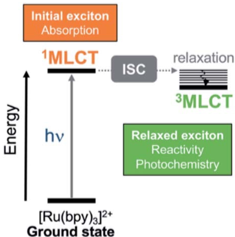Characterising excited states in transition metal complexes by looking at pictures of orbitals can be a tedious task. Even more, it is hard to eliminate personal in the process and produce quantitative results. In a study led by Pedro Sánchez-Murcia from the University of Vienna, we have taken a closer look at this problem in the case of various substituted complexes deriving from the archetype Ru(bpy)3 with the aim of quantifying how different substituents influence the localisation of the excited electron. The result is presented in the article “Orbital-free photophysical descriptors to predict directional excitations in metal-based photosensitizers,” which just appeared in Chemical Science.
